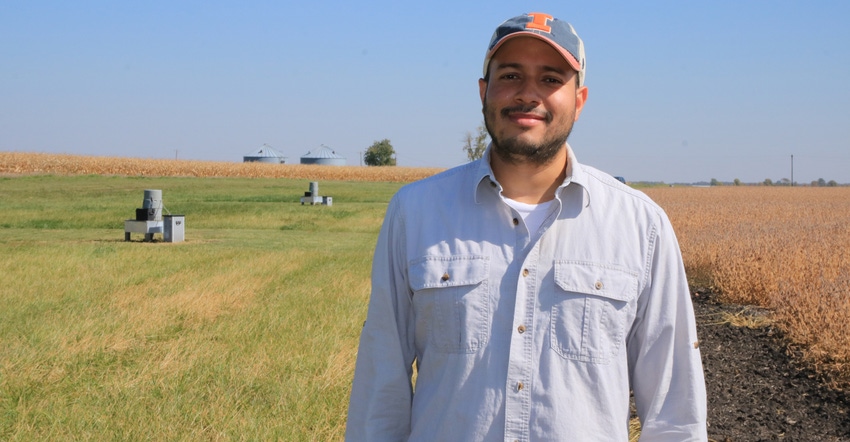
Could variable-rate phosphorus and more specific soil testing reduce nutrient loss?
Researchers at the University of Illinois say yes, thanks to a new study of flat, tile-drained acreage. Luis Andino, lead author on the study and U of I graduate student, says they found natural low spots had higher P levels than anywhere else in the same field — several times higher than the 65 pounds per acre that the Illinois Agronomy Handbook recommends for central Illinois soils. The only areas that had the low spots beat were those where livestock barns used to sit.
Why the dramatic increase in low-lying areas? Andino says it’s because water ponds in low spots and drowns out crops that would take up P, leaving behind soil-bound phosphorus from higher elevations in the field.
For Andino, that means more soil testing in low-lying areas could help landowners know exactly what they need or don’t need. Then they could use variable-rate phosphorus application to put the macronutrient in just the right spots.
“We know that increasing the number of soil samples collected per field will increase cost, and we want to be practical. That’s why we’re starting to look at targeted soil sampling,” Andino says of an experimental soil testing method that focuses on the variability in slopes for the soils of a field.
Rather than potentially skip a low spot with a grid pattern, Andino targeted them with more soil samples in the research field. The two deepest depressions had the highest available P of the field, other than legacy manure that tested up to 350 pounds per acre in the portions of the field that used to house livestock barns.
Andino saw a strong relationship between P level and the depth in the depression. “We found P levels increased as we went down into the depression, and the highest P levels were at the bottom of the depression,” Andino says, estimating one extended 1.3 feet deep. He can safely say low spots where ponding occurs disproportionately contribute P to tile lines, as this study includes 36 tile laterals across the entire 280-acre field.
Dissolved phosphorus
Andino has good news for tile-drained fields: Sure, they lose phosphorus because it deposits in low spots and leaches with tile water as dissolved P. But when losses were averaged across the entire field, tiles only lost 0.1 pound of dissolved P per acre per year. That’s about 14% of the rate of annual dissolved P loss in the nearby Embarras River. The four laterals that leaked the most P were under former livestock barns and pasture, with manure sticking around and leaching for more than 70 years.
According to Lowell Gentry, who manages the Filson, Ill., research site where the study was conducted, the study shows how variable-rate phosphorus application can help direct nutrients to specific areas of fields — and they’re learning more about how to find and manage the areas with the greatest risk of subsurface P loss.
“Accurate soil phosphorus mapping across a given field is critical for the efficient use of fertilizers and to avoid overapplication, especially when relying on phosphorus from animal manure,” says Gentry, a principal research specialist in U of I’s Department of Natural Resources and Environmental Sciences.
They also discovered that P losses are higher following application ahead of a rain event. Data from the Embarras River shows that some of the highest-recorded nutrient loss occurs following snowmelt events. By timing broadcast applications of P well ahead of predicted rain events and avoiding application on snow, farmers can reduce P loss.
Gentry says better soil maps will help farmers target P hot spots, and then they can use variable-rate technology to get phosphorus rates back to reasonable levels in those “enriched” areas. But that will take time.
“We’re going to need to slowly draw P rates down. Because if they keep drowning out, it’s going to take a long time," Gentry concludes.
About the Author(s)
You May Also Like




